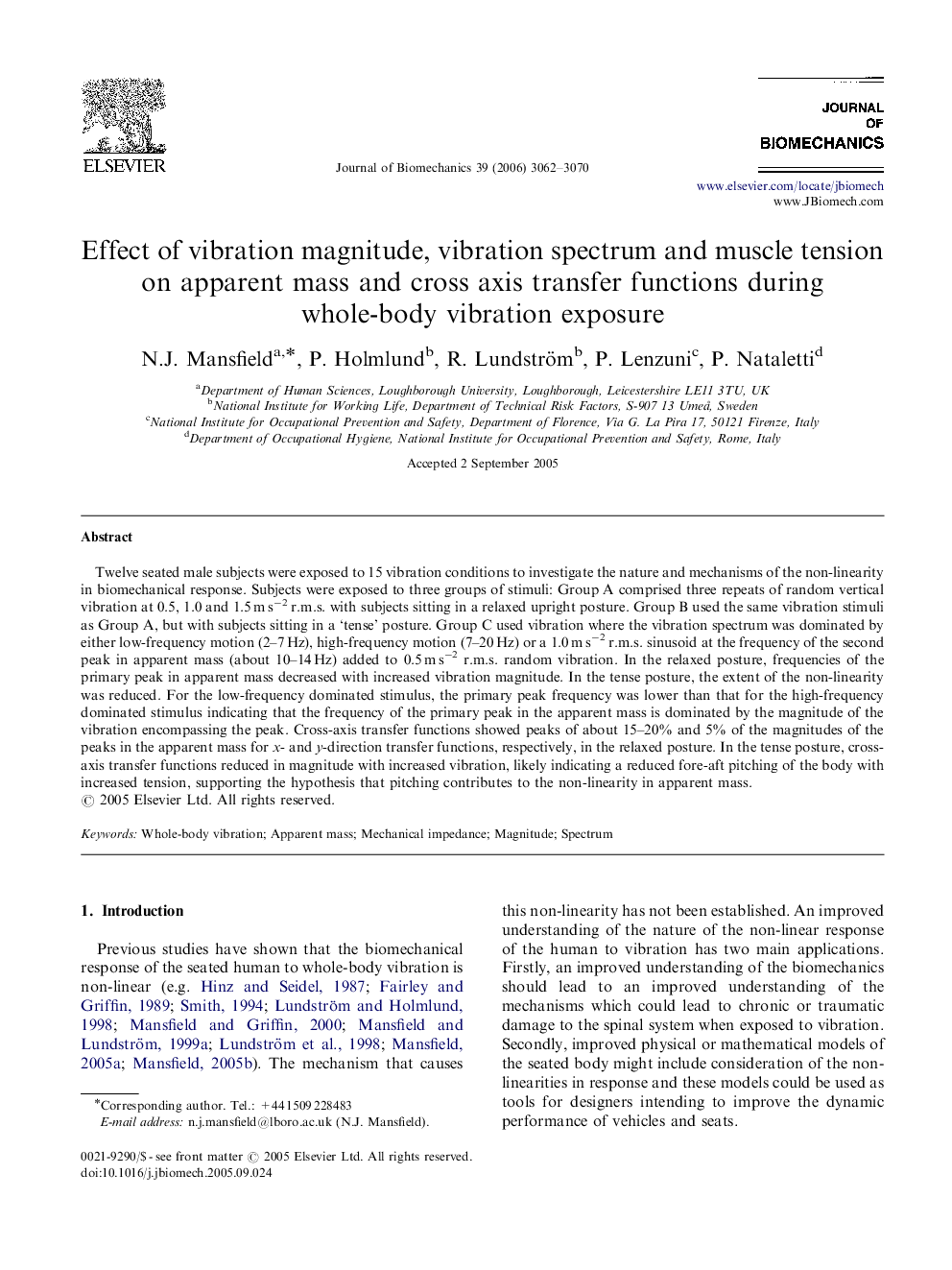| Article ID | Journal | Published Year | Pages | File Type |
|---|---|---|---|---|
| 874490 | Journal of Biomechanics | 2006 | 9 Pages |
Twelve seated male subjects were exposed to 15 vibration conditions to investigate the nature and mechanisms of the non-linearity in biomechanical response. Subjects were exposed to three groups of stimuli: Group A comprised three repeats of random vertical vibration at 0.5, 1.0 and 1.5 m s−2 r.m.s. with subjects sitting in a relaxed upright posture. Group B used the same vibration stimuli as Group A, but with subjects sitting in a ‘tense’ posture. Group C used vibration where the vibration spectrum was dominated by either low-frequency motion (2–7 Hz), high-frequency motion (7–20 Hz) or a 1.0 m s−2 r.m.s. sinusoid at the frequency of the second peak in apparent mass (about 10–14 Hz) added to 0.5 m s−2 r.m.s. random vibration. In the relaxed posture, frequencies of the primary peak in apparent mass decreased with increased vibration magnitude. In the tense posture, the extent of the non-linearity was reduced. For the low-frequency dominated stimulus, the primary peak frequency was lower than that for the high-frequency dominated stimulus indicating that the frequency of the primary peak in the apparent mass is dominated by the magnitude of the vibration encompassing the peak. Cross-axis transfer functions showed peaks of about 15–20% and 5% of the magnitudes of the peaks in the apparent mass for x- and y-direction transfer functions, respectively, in the relaxed posture. In the tense posture, cross-axis transfer functions reduced in magnitude with increased vibration, likely indicating a reduced fore-aft pitching of the body with increased tension, supporting the hypothesis that pitching contributes to the non-linearity in apparent mass.
